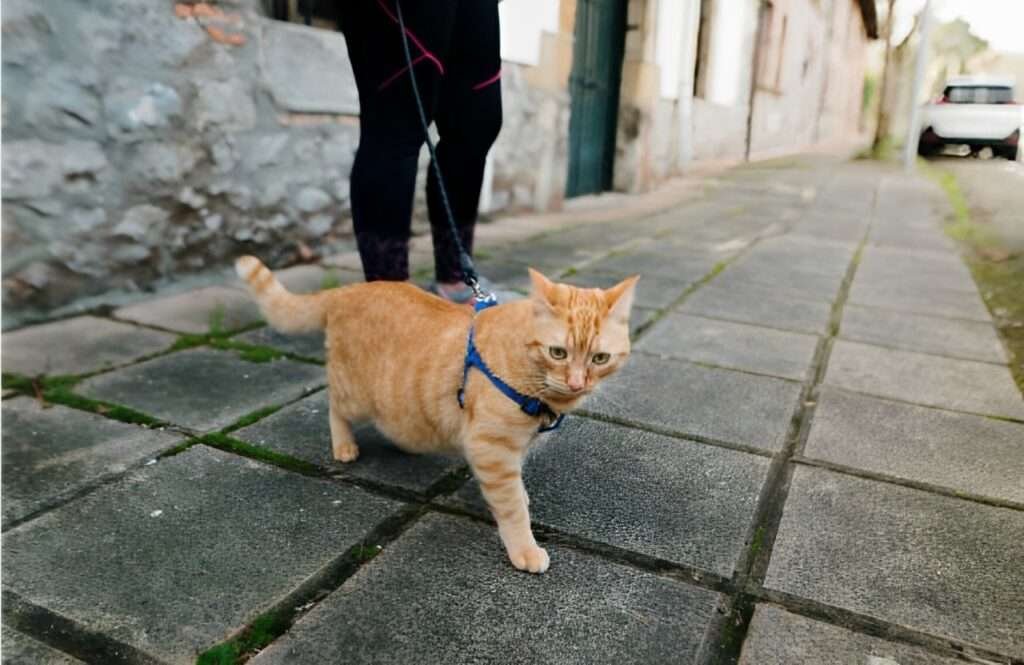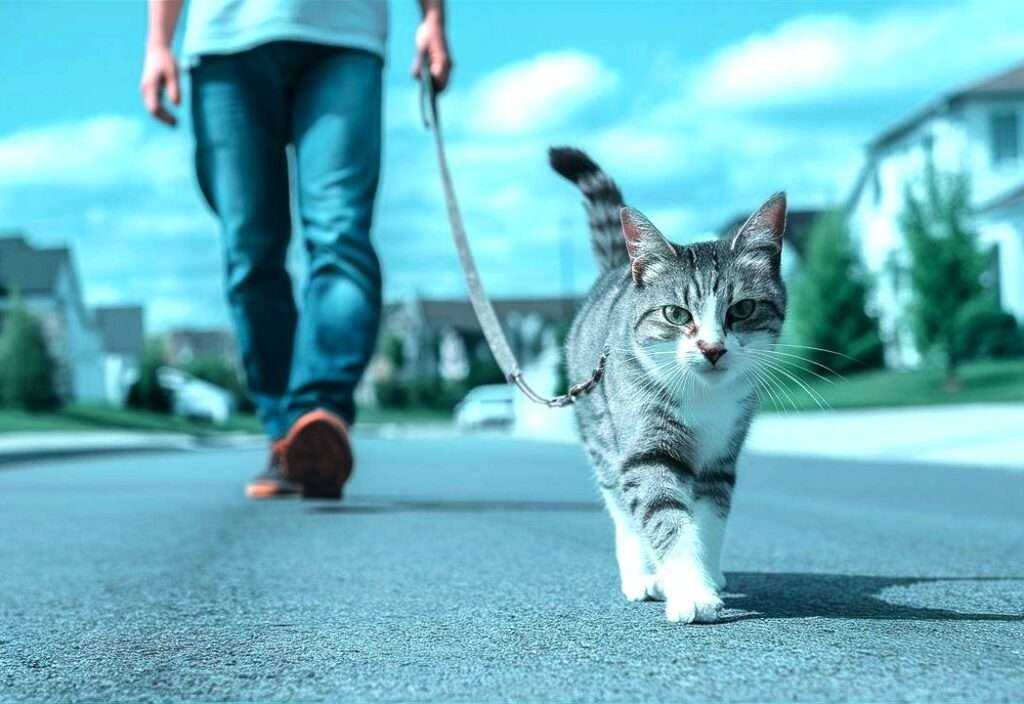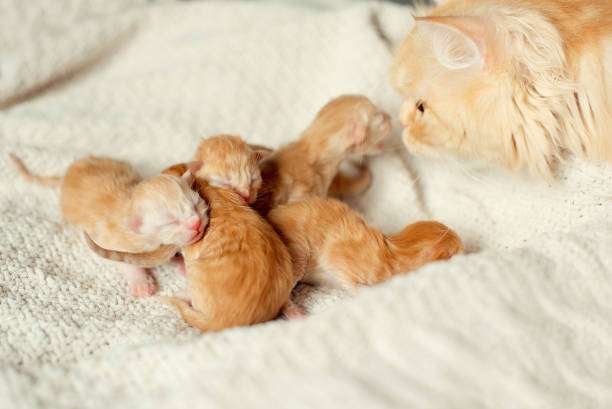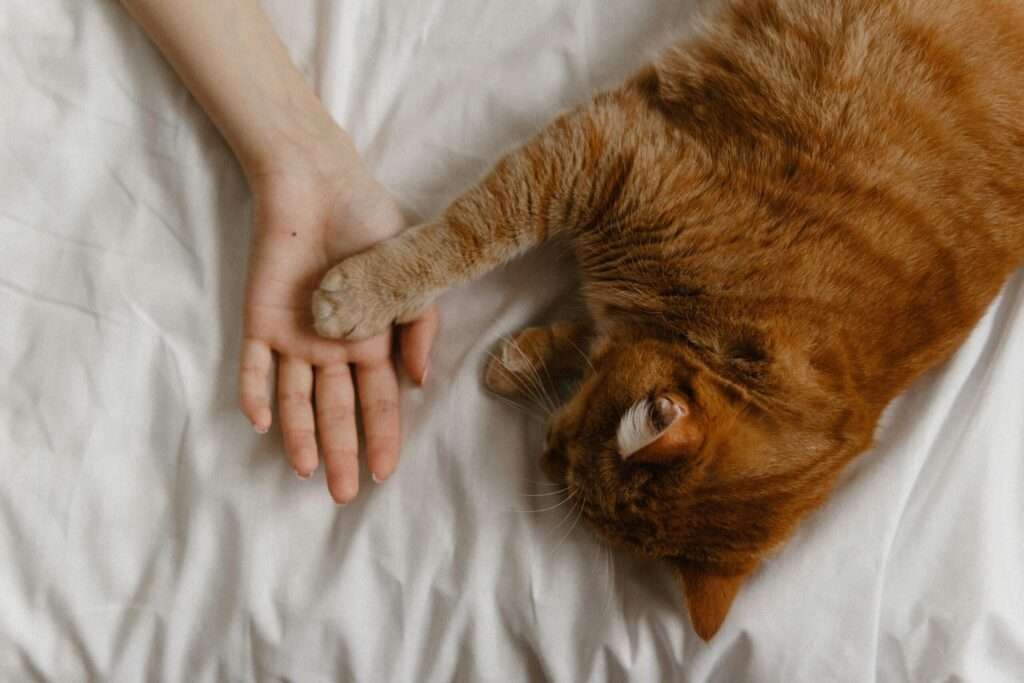Training your cat to walk on a leash can open up a new world of adventures for both you and your feline friend. While not all cats are created equal and the process will require patience, the rewards are well worth the effort. In this guide, we’ll explore harness acclimation, harness training, leash training, and finally, the great outdoors. Remember, it’s important to proceed at your cat’s pace and never force them into uncomfortable situations. With careful training and positive reinforcement, your cat can learn to enjoy walks on a leash.
Table of Contents
ToggleUnderstanding Your Cat
Let’s talk about leash training. Your cat can and will walk on a leash, but not all cats are created equal, and it will require your patience and not to force them. Before we start, be mindful that going outdoors might be overwhelming for your cat. Probably it will be, and there’s a fine line between challenge and fear, and we don’t want to cross that line. If we cross that line, it’s going to become way more difficult to overcome that threshold, which is the front door. In this video today, I’m going to share harness acclimation, harness training, leash training, and finally, the great outdoors.

Choosing the Right Harness
Hey buddy, there’s an infinity of harnesses out there. How do we know which one is the one that we need for our pet? You need to know what do you want the harness for, where do you want to go with your cat, because depending on your objective, you’re going to choose one harness or another. Cats are not dogs, and there’s plenty of dog harnesses out there that say they are suitable for cats, but that’s not really true. The body type of a dog is nowhere close to where the body type of a cat is, so you want to make sure that you’re getting a cat-specific harness because we don’t want our cat to escape, right? That’s the whole reason why we’re walking them on a leash. At the end of the video, I’m going to share the three harnesses that I use for photography, for places where I want to make sure that Cosmo cannot escape, and the other one is a harness that’s as well-cooked for those days it’s extremely cold.
Neck and girth are the two measurements that you need to check before buying the harness for your pet. Our cats are pro acrobats, and we want to make sure that we’re not restricting their movement. My ultimate recommendation, but we’re in coffee times, and we don’t all have the chance or the willingness to go to a pet store, try them on your pet between the harness and their body. We can fit one or two fingers.

Introducing the Harness
The first thing we want to do is to introduce the harness and our cat. Cosmo, this is the harness. Harness, this is Cosmo. Jokes aside, how do we introduce a harness into a household? We put the harness in their comfort place. I would be placing the harness on his cat tree for at least a week or a week and a half. The objectives of doing this are basically two: they can impregnate with their scent the harness, and they can feel it their own, and the second one is that we can start building this positive association. And if we see that our pet is sniffing or touching the harness in any way, we can use clicker training. Click and reward, and we start building that positive reinforcement or positive association. If you don’t know what clicker training is, you can click on the video. If it’s not here, it’s here. I don’t really know how this works, but you can click on the video somewhere here and see what clicker training is.

Putting on the Harness
I’m so excited we’re putting it on. He’s looking at me like, what the—what are you doing? Ah, this is a lot of talking. Okay, I’m so excited we’re putting the harness on. If your cat is comfortable with you blocking their movement, easily place a hand on their chest to prevent them from moving forward. Buckle up. A different method is to use some food to distract them and place the harness while they are eating. In case that none of these two techniques work for you, leave it in the comments, and we can try to figure out together a way to put the harness on your cat. Two things can happen now: it can happen that your cat starts squiggling around and is not comfortable and just lays on the floor complaining, not willing to move, or they just don’t care, and they keep doing life as normal. If your cat is the second type, you’re set.
Handling Discomfort
In the case that your cat doesn’t like the harness, we have work to do, and it’s going to require patience. The first thing that I want you to try is to get their favorite toy and move it around them, see if it sparks their attention. Even if they start moving, keep playing with them, and you might just have solved the problem. If that’s the case, keep it moving, keep them entertained, keep them following that toy, and you’re set. In the case that the toy doesn’t work, we’re going to do three things: keep the sessions very short, praise them a lot, and give them a lot of treats. For how long? My recommendation is that you do sessions of no more than one, two, three minutes, two or three times a day for a week. It should be enough. I just sounded like a doctor.
Adding the Leash
This step is so simple it shouldn’t be considered a step. Once our cat is comfortable with the harness, we just incorporate the leash and we start walking them around home.
The Great Outdoors
The great outdoors are overwhelming. Our cats are predators, but they are also prey, and they can get overwhelmed by cars, by dogs, by people, by wind, by who knows what. They hear a lot better than us, they see a lot better than us, and we have no idea what’s going on, but they do. What can we do about it? We want to keep the sessions short and sweet, make every experience with the leash and the harness positive so that they want to repeat it in the future. If they feel scared or shaky, you’re expecting too much too soon. Two pieces of advice here: the first one is choose wisely the places that you go with your cat. A quiet place is going to make the experience more pleasant for everyone. And the second one, our pets are more active at dawn and dusk. Those time frames are going also to make our pet more comfortable. There’s no such thing as walking a cat. Cats walk us. They get distracted a lot, they want to smell absolutely everything, they want to check every single hole, they want to climb every single tree, so take a lot of patience and a lot of treats. This is the most important piece of advice I will give you today: if the cat starts walking backwards, don’t pull from the leash. If the line goes tense, that could cause them to escape. Instead, walk towards them so that they cannot squeeze themselves out of the harness. It doesn’t matter what harness it is, even the escape-proof harnesses, if they are walking backwards and the leash is tense, they can escape. That’s terrifying.
Recommended Harnesses
It’s the harnesses. I said that I would share with you which are my top favorite three harnesses that I own, and this is what I’m going to do now. I said harnesses, not leash and collar. Most cat collars are breakaway so that they don’t get strangled if they get entangled into something. What protects our cat from the environment if they break away? So don’t use a collar and a leash to walk them outdoors. Use a leash and a harness. Long story short, invest in a harness. Which one?
Well, I’m going to show you the ones that I use. These are the three harnesses that I use the most. This one is super light. It gives her a lot of mobility. She can jump around and do everything that she usually does, and it’s great for taking pictures. This one is very sturdy, very well built. It’s very warm, but she cannot really do anything with it, basically for walking up and down. And this is the safest harness that I’ve ever had. She has never escaped from it, and she has escaped from others. It’s the one that I use to walk her in the city and to ride her on my bike. These are my three favorite.



